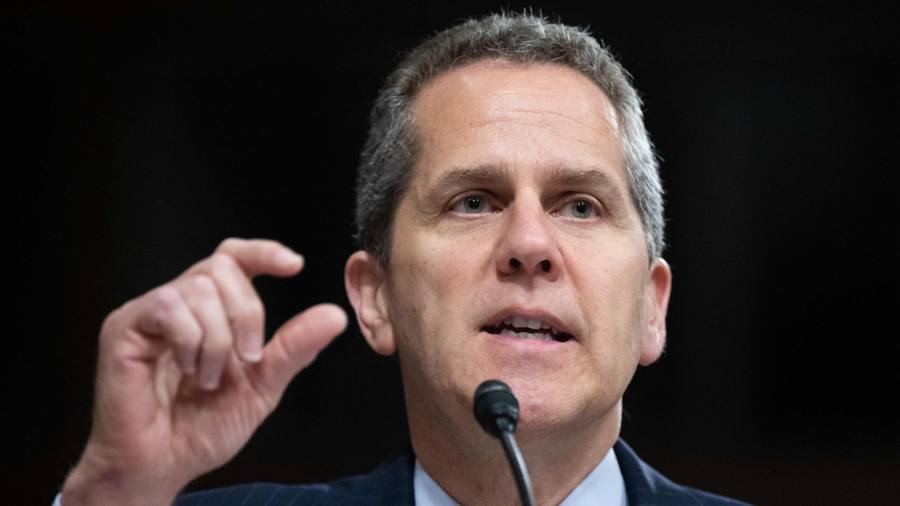
Receive free US banks updates
We’ll send you a myFT Daily Digest email rounding up the latest US banks news every morning.
A top US banking regulator has announced tougher capital rules for a broader range of lenders in a bid to shore up a financial system rattled by the failure of several regional banks earlier this year.
Michael Barr, vice-chair for supervision at the Federal Reserve, on Monday unveiled regulatory changes for institutions with $100bn or more in assets, proposing harsher capital standards that will require banks to stow away additional capital which can be used to absorb any losses.
“The comprehensive set of proposals that I have described here today would significantly strengthen our financial system and prepare it for emerging and unanticipated risks, such as those that manifested themselves in the banking system earlier this year,” he said at an event hosted by the Bipartisan Policy Center in Washington DC.
The proposals come months after three of the four largest failures of federally insured banks in US history — Silicon Valley Bank, Signature Bank and First Republic — sparked fears about the resilience of regional lenders. All three failed banks had more than $100bn in assets but were below the current $250bn threshold for more stringent requirements.
Crucially, the new rules would also require banks with more than $100bn in assets to report the effect of losses on their assets on their capital levels, which, Barr said “improve the transparency of regulatory capital ratios, since it would better reflect banking organisations’ actual loss-absorbing capacity”. SVB had been exempt from that rule due to its size and the sudden losses that it took when it sold assets spooked investors and depositors.
“In an obvious way, the failures of SVB and other banks this spring were a warning that banks need to be more resilient, and need more of what is the foundation of that resilience, which is capital,” Barr said.
He said the changes would increase capital requirements across the US banking industry, but “would principally raise capital requirements for the largest, most complex banks”.
The proposed new banking rules will come in two forms: the final implementation of new international standards — the so-called Basel III endgame reforms — and a holistic review of capital rules that Barr had announced last year.
US bank executives have been nervously awaiting the new proposals for months. Morgan Stanley’s chief executive James Gorman said last month that the first proposed numbers around the new Basel rules would be “ugly” for the industry, but that the proposals could be amended during a long comment period.
Most jurisdictions that have already implemented the Basel reforms applied the rules to all of their banks. However, the US, with its more fragmented banking system and more than 4,000 banks, is an outlier and has taken a size-based tiers approach.
Barr emphasised on Monday that alterations to the current system would go through a standardised rulemaking process, which would allow “all interested parties ample time to weigh in on the proposed changes”. There would also be an extensive phase-in period to ensure a smooth transition.
Among the other changes, Barr proposed a more “transparent and consistent” approach to assessing banks’ individual credit and market risks, ending the practice of institutions putting forward their own individual assessments, which he said often “underestimate” potential problems.
He proposed broadening the scope of the Fed’s annual stress tests to evaluate a wider range of risks.
Barr also said he planned changes around a capital surcharge currently applied to the so-called global systemically important banks (G-Sibs).
Specifically, Barr said he would tailor rules to reduce the incentives for banks to do “window dressing” and temporarily alter a balance sheet to obtain a lower G-Sib surcharge, as well as reduce the increments at which additional capital is required to lessen “cliff effects”.
Barr opted against making any adjustments to how banks calculate their so-called supplementary leverage ratios (SLRs), which requires large banks to have capital equal to at least 3 per cent of their assets, or 5 per cent for the largest systemically important institutions. He rejected lobbying from lenders who wanted Treasuries and cash reserves exempted and cited liquidity concerns in US government bond markets.